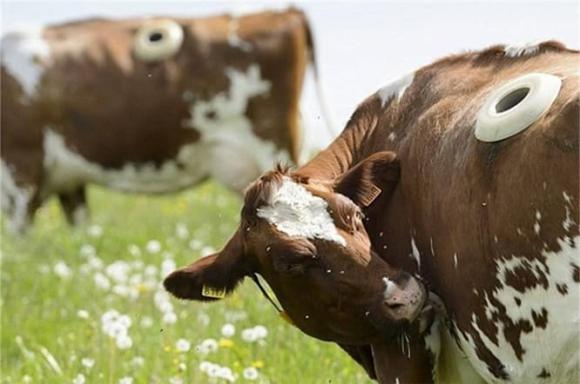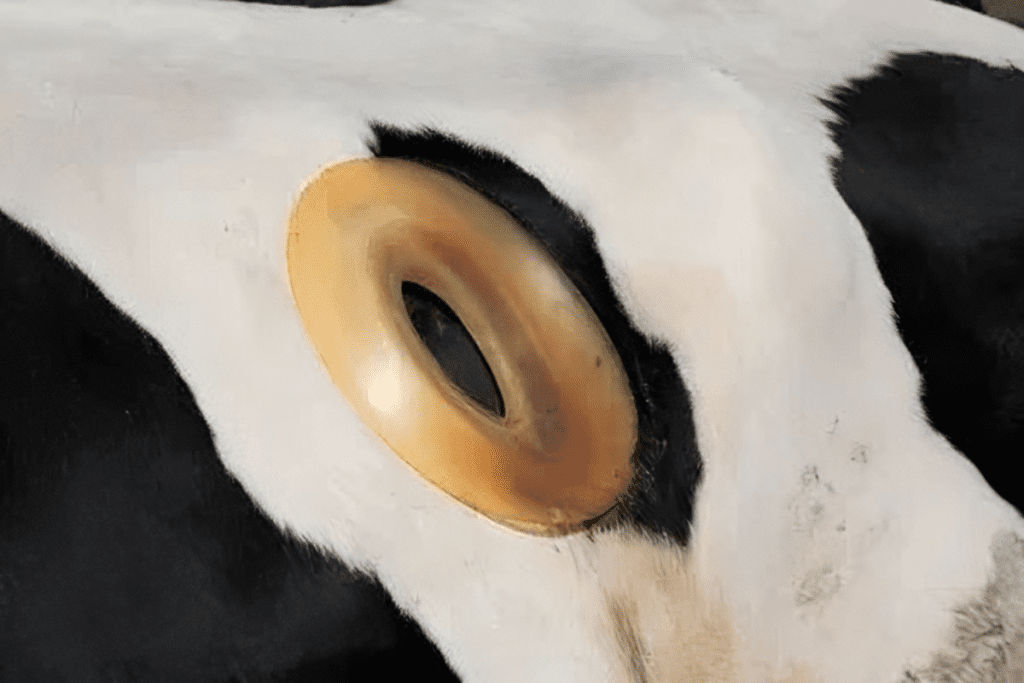When you hear the word “portholes,” your mind might immediately drift to small circular windows on a ship or an airplane. But what if I told you that portholes are also used on cows? Yes, you read that right! In fact, for decades, farmers and scientists have been using something called “cow portholes” or fistulas to access a cow’s stomach directly. This may sound strange at first, but this practice plays a significant role in agricultural science and has fascinating benefits. Let’s dive into what cow portholes are, why they’re used, and the controversy surrounding them.
What Are Cow Portholes or Fistulas?

A cow porthole—officially known as a fistula or cannula—is a surgically created opening that provides direct access to the cow’s rumen, which is the largest compartment of a cow’s four-part stomach. These portholes are fitted with a plastic or rubber ring that keeps the hole open, allowing scientists and veterinarians to study the cow’s digestive process in real time.
The idea of fistulating cows isn’t new. This method was first introduced in the 1920s by researchers who were eager to understand the complexities of a cow’s digestive system without having to repeatedly sedate or operate on the animal. The porthole gives scientists a unique opportunity to collect samples of partially digested food, gases, and microbes, all of which play a key role in animal digestion and health.
How Do Cow Portholes Work?
The porthole procedure begins with the creation of a small incision in the cow’s side, leading directly to the rumen. A durable ring is inserted into this incision, keeping the opening secure and sterile. Once the cow has fully healed, researchers can access the rumen by simply removing the cover from the porthole. This direct access allows them to insert or remove materials from the cow’s stomach, including food samples or digestive fluids, without causing any further discomfort to the animal.
This method is surprisingly non-invasive after the initial surgery, and cows fitted with portholes often live normal, healthy lives. In fact, many cows with fistulas continue to function just like other livestock, grazing and producing milk without any visible discomfort.
The Purpose of Using Portholes in Cows
You might be wondering why anyone would need direct access to a cow’s stomach. The primary reason for fistulating cows is to study their digestion. Cows are ruminants, which means they have a unique digestive system designed to break down fibrous plant materials like grass. Researchers use portholes to gain insight into how a cow processes various types of feed, and this data has critical implications for improving livestock nutrition, health, and even environmental sustainability.
Here’s a closer look at the reasons why cow portholes are used:
1. Studying Digestion and Nutrient Absorption
The most obvious use of cow portholes is to study the digestion process. Researchers collect samples from the rumen to analyze how well cows digest different types of food. This helps scientists and farmers better understand which feed types promote optimal health and nutrition. By understanding the nutritional value of different feeds, they can develop diets that improve the efficiency of digestion and nutrient absorption, leading to healthier, more productive cows.
2. Improving Livestock Health

The health of the cow’s digestive system is critical to its overall well-being. By using portholes, scientists can monitor microbial activity, gas production, and other digestive processes in real time. This allows them to catch potential issues early, such as digestive blockages or imbalances in gut bacteria. Better insight into these processes can lead to the development of new treatments and preventative measures that enhance animal health.
3. Increasing Milk Production
For dairy farmers, optimizing a cow’s diet is crucial for maximizing milk production. By studying how cows process different feeds, scientists can recommend dietary changes that enhance milk yield without causing stress or harm to the animal. The goal is to create the most nutritionally balanced diet possible, ensuring that cows produce high-quality milk while remaining healthy.
4. Reducing Methane Emissions
One of the most surprising benefits of studying cow digestion through portholes is its potential impact on the environment. Cows are known for producing methane—a potent greenhouse gas—during digestion. By closely monitoring how cows break down food, scientists are developing feed formulas that reduce methane emissions. These innovations contribute to more sustainable farming practices by lowering the carbon footprint of livestock farming.
The Ethical Debate: Is It Cruel or Beneficial?

Despite the benefits of using cow portholes, this practice does not come without controversy. Animal rights advocates have raised concerns about the ethics of creating a permanent opening in an animal’s body, arguing that it could cause unnecessary suffering. Critics often view the procedure as invasive and unnatural, and they question whether the benefits truly outweigh the potential harm to the animal.
On the other side of the debate, proponents argue that fistulating cows is actually a humane alternative to more invasive forms of research. After the initial surgery, cows typically show no signs of discomfort, and the procedure eliminates the need for repeated operations, which would otherwise be stressful for the animal. Supporters also point out that the research conducted through fistulation has led to significant advancements in animal health, nutrition, and environmental sustainability, all of which benefit the livestock industry as a whole.
The Long-Term Impact of Using Portholes in Cows
The use of portholes in cows has had a lasting impact on the agricultural and scientific communities. Thanks to this practice, researchers have been able to make major strides in understanding the complexities of ruminant digestion. The data collected from cows with fistulas has led to improved feeding practices, healthier animals, and reduced environmental impact from livestock farming.
Moreover, this method continues to be a valuable tool for advancing scientific research. By closely monitoring how cows digest different types of feed, researchers are better equipped to develop diets that maximize efficiency and minimize waste. This, in turn, helps farmers increase their productivity while lowering costs and reducing the environmental footprint of their operations.

So, what are portholes in cows? These surgically created openings may seem like an unusual and even controversial practice, but they play a vital role in advancing our understanding of ruminant digestion. While the ethics of fistulating cows is still debated, there is no denying the significant benefits it has brought to the livestock industry. From improving animal health and boosting milk production to contributing to a more sustainable future, cow portholes are an innovative tool that many people are only just beginning to appreciate.
While it’s easy to feel uneasy about the idea at first, the reality is that cow portholes have helped pave the way for more efficient, humane, and environmentally friendly farming practices. And with ongoing research, this unusual method will likely continue to shape the future of agriculture for years to come.


